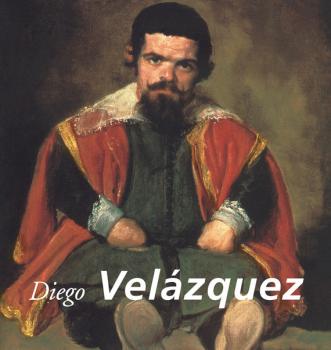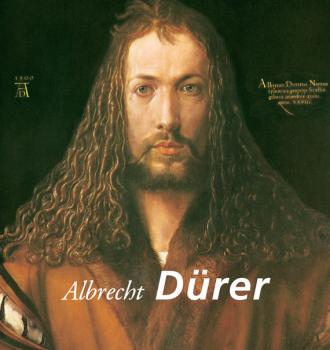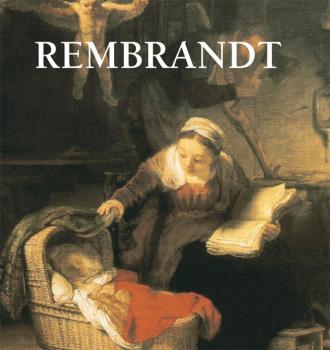Klaus Carl
Список книг автора Klaus CarlVelasquez
Diego Rodríguez de Silva y Velázquez (June 1599 – August 6 1660), known as Diego Vélasquez, was a painter of the Spanish Golden Age who had considerable influence at the court of King Philip IV. Along with Francisco Goya and Le Greco, he is generally considered to be one of the greatest artists in Spanish history. His style, whilst remaining very personal, belongs firmly in the Baroque movement. Velázquez’s two visits to Italy, evidenced by documents from that time, had a strong effect on the manner in which his work evolved. Besides numerous paintings with historical and cultural value, Diego Vélasquez painted numerous portraits of the Spanish Royal Family, other major European figures, and even of commoners. His artistic talent, according to general opinion, reached its peak in 1656 with the completion of Las Meninas, his great masterpiece. In the first quarter of the 19th century, Velázquez's style was taken as a model by Realist and Impressionist painters, in particular by Édouard Manet. Since then, further contemporary artists such as Pablo Picasso and Salvador Dalí have paid homage to their famous compatriot by recreating several of his most famous works.
Dürer
Dürer is the greatest of German artists and most representative of the German mind. He, like Leonardo, was a man of striking physical attractiveness, great charm of manner and conversation, and mental accomplishment, being well grounded in the sciences and mathematics of the day. His skill in draughtsmanship was extraordinary; Dürer is even more celebrated for his engravings on wood and copper than for his paintings. With both, the skill of his hand was at the service of the most minute observation and analytical research into the character and structure of form. Dürer, however, had not the feeling for abstract beauty and ideal grace that Leonardo possessed; but instead, a profound earnestness, a closer interest in humanity, and a more dramatic invention. Dürer was a great admirer of Luther; and in his own work is the equivalent of what was mighty in the Reformer. It is very serious and sincere; very human, and addressed the hearts and understanding of the masses. Nuremberg, his hometown, had become a great centre of printing and the chief distributor of books throughout Europe. Consequently, the art of engraving upon wood and copper, which may be called the pictorial branch of printing, was much encouraged. Of this opportunity Dürer took full advantage. The Renaissance in Germany was more a moral and intellectual than an artistic movement, partly due to northern conditions. The feeling for ideal grace and beauty is fostered by the study of the human form, and this had been flourishing predominantly in southern Europe. But Albrecht Dürer had a genius too powerful to be conquered. He remained profoundly Germanic in his stormy penchant for drama, as was his contemporary Mathias Grünewald, a fantastic visionary and rebel against all Italian seductions. Dürer, in spite of all his tense energy, dominated conflicting passions by a sovereign and speculative intelligence comparable with that of Leonardo. He, too, was on the border of two worlds, that of the Gothic age and that of the modern age, and on the border of two arts, being an engraver and draughtsman rather than a painter.
Rembrandt
Rembrandt is completely mysterious in his spirit, his character, his life, his work and his method of painting. What we can divine of his essential nature comes through his painting and the trivial or tragic incidents of his unfortunate life; his penchant for ostentatious living forced him to declare bankruptcy. His misfortunes are not entirely explicable, and his oeuvre reflects disturbing notions and contradictory impulses emerging from the depths of his being, like the light and shade of his pictures. In spite of this, nothing perhaps in the history of art gives a more profound impression of unity than his paintings, composed though they are of such different elements, full of complex significations. One feels as if his intellect, that genial, great, free mind, bold and ignorant of all servitude and which led him to the loftiest meditations and the most sublime reveries, derived from the same source as his emotions. From this comes the tragic element he imprinted on everything he painted, irrespective of subject; there was inequality in his work as well as the sublime, which may be seen as the inevitable consequence of such a tumultuous existence. It seems as though this singular, strange, attractive and almost enigmatic personality was slow in developing, or at least in attaining its complete expansion. Rembrandt showed talent and an original vision of the world early, as evidenced in his youthful etchings and his first self-portraits of about 1630. In painting, however, he did not immediately find the method he needed to express the still incomprehensible things he had to say, that audacious, broad and personal method which we admire in the masterpieces of his maturity and old age. In spite of its subtlety, it was adjudged brutal in his day and certainly contributed to alienate his public. From the time of his beginnings and of his successes, however, lighting played a major part in his conception of painting and he made it the principal instrument of his investigations into the arcana of interior life. It already revealed to him the poetry of human physiognomy when he painted The Philosopher in Meditation or the Holy Family, so deliciously absorbed in its modest intimacy, or, for example, in The Angel Raphael leaving Tobias. Soon he asked for something more. The Night Watch marks at once the apotheosis of his reputation. He had a universal curiosity and he lived, meditated, dreamed and painted thrown back on himself. He thought of the great Venetians, borrowing their subjects and making of them an art out of the inner life of profound emotion. Mythological and religious subjects were treated as he treated his portraits. For all that he took from reality and even from the works of others, he transmuted it instantly into his own substance.


